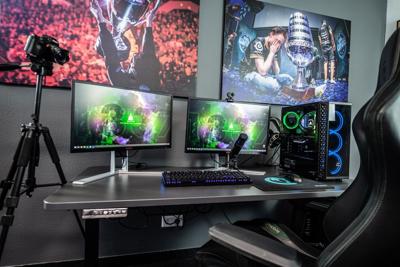
In the gaming industry, environment design is a cornerstone, shaping players' experiences and interactions. It's not just about aesthetics; it's about creating worlds that resonate, guide, and challenge. Within this spectrum, 2D game environments hold a unique significance.
Unlike their 3D counterparts, 2D environment design relies on a delicate balance of depth, detail, and perspective, all within a limited dimensional space. These environments, reminiscent of the early days of gaming, can evoke nostalgia while simultaneously pushing the boundaries of modern design, proving that two dimensions can offer an equally immersive experience.
The Psychological Impact of 2D Environments
2D game environments, though limited in dimension, possess a profound ability to touch players emotionally. Visual elements, meticulously chosen, become conduits for feelings and moods. With their inherent psychological associations, colors can instill serenity, excitement, or even dread.
Whether familiar or abstract, shapes can resonate with players, evoking memories or creating tension. The layout, a silent guide, sets the game's rhythm, making players feel welcomed or challenged. Together, these elements in 2D designs don't just create a backdrop; they craft an emotional landscape, profoundly influencing how players navigate and experience the game.
Immersion and Engagement
A well-crafted 2D environment is more than just a backdrop; it's a magnetic force pulling players into its world. Every detail, from the rustling leaves to the distant cityscape, beckons players to explore and engage. Consistency is the golden thread weaving this tapestry together. Inconsistencies, no matter how minor, can jolt players out of their immersion, breaking the spell.
On the other hand, meticulous details, harmoniously integrated, create a seamless and believable world. In such environments, players don't just play; they live, breathe, and become a part of the narrative, a testament to the power of immersive 2D design.
Navigation and Gameplay Mechanics
2D environment design is pivotal in guiding or posing challenges to players. It's not merely about beautiful backdrops; it's about creating pathways, obstacles, and cues that steer gameplay. A shadow might hint at a hidden passage, while a peculiar pattern could signal danger. This interplay demands a delicate balance. While aesthetics set the mood and captivate players, functionality ensures the game remains playable and enjoyable. Striking the right equilibrium means crafting environments that are visually stunning and intuitively navigable, ensuring a seamless and engaging player experience.
Storytelling Through Environments
Typically, environments serve as silent narrators within the game, whispering tales of bygone eras or hinting at unfolding mysteries. A dilapidated building might recount a city's fall, while a vibrant marketplace could depict its cultural richness. These settings, when crafted with intent, become powerful storytelling tools, conveying both backstory and current plot nuances without a word spoken.
Take, for instance, the classic game Super Metroid. Its desolate, alien landscapes set the mood and unravel the story of a planet's tragic history and its current perils. Similarly, Hollow Knight uses its haunting, interconnected environments to weave a tale of decay, heroism, and ancient secrets.
In essence, when game designers harness the potential of their environments, they create a multi-layered narrative experience. Players don't just traverse these worlds; they absorb their stories, piecing together lore and legend with every step.
Challenges in 2D Game Environment Design
Designing 2D game environments is a dance of precision and creativity, fraught with unique challenges. One of the foremost is striking a balance between granting players the freedom to explore and ensuring they follow the intended narrative path. Too much freedom can lead to aimlessness, while excessive guidance can stifle exploration and discovery.
Furthermore, the inherent limitations of a 2D plane present challenges in clarity and readability. Without the luxury of a third dimension, designers must craft visually engaging and easily navigable environments. A cluttered scene can overwhelm players, making it challenging to discern essential elements or paths. Conversely, overly simplistic designs can lack depth and immersion.
So, we can all agree that 2D game environment design is a tightrope walk, demanding designers to harmonize aesthetics with functionality, guiding players through captivating tales while ensuring a smooth and intuitive gameplay experience.
Summing Up
Throughout our exploration, we've delved deep into the multifaceted world of 2D game environment design. From its profound psychological impact, the delicate balance of immersion and engagement, to the challenges designers face, it's evident that these environments are more than mere backdrops. They are intricate tapestries that shape narratives, guide players and craft unforgettable experiences.
As gaming continues to evolve, the significance of 2D environments remains undiminished. Their ability to captivate, challenge, and immerse players is a testament to their enduring influence, underscoring their pivotal role in crafting memorable player experiences.





(0) comments
We welcome your comments
Log In
Post a comment as Guest
Keep it Clean. Please avoid obscene, vulgar, lewd, racist or sexually-oriented language.
PLEASE TURN OFF YOUR CAPS LOCK.
Don't Threaten. Threats of harming another person will not be tolerated.
Be Truthful. Don't knowingly lie about anyone or anything.
Be Nice. No racism, sexism or any sort of -ism that is degrading to another person.
Be Proactive. Use the 'Report' link on each comment to let us know of abusive posts.
Share with Us. We'd love to hear eyewitness accounts, the history behind an article.